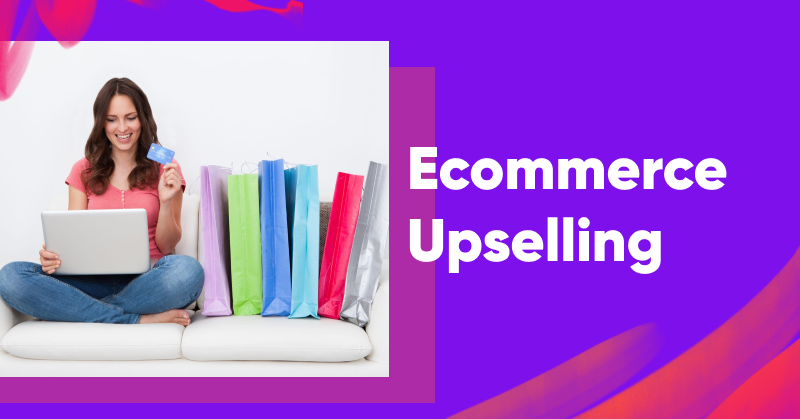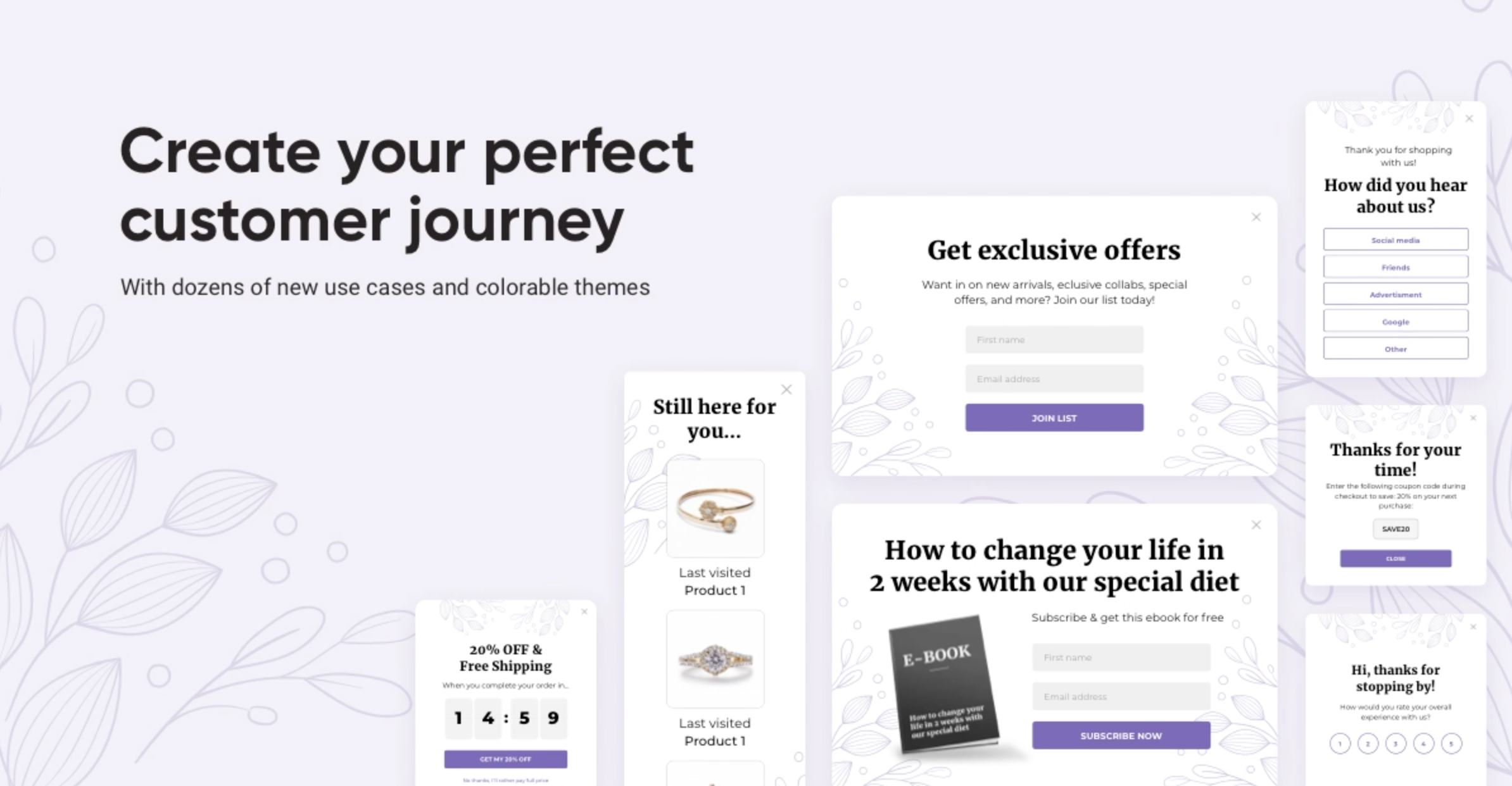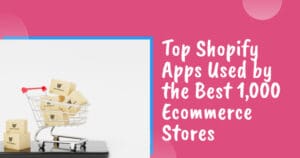One of the fastest and easiest ways to drive revenue growth for your ecommerce site is a tried and true sales and marketing technique—upselling.
Every online store or ecommerce brand uses upselling. Whether it’s a large retailer like Amazon or Target or a small to mid-sized mom-and-pop store.
But if upselling isn’t used correctly it can deter your customers. They might even get annoyed and leave your store.
We’ll discuss what ecommerce upselling is and why it’s important. We’ll also discuss six effective upselling sales techniques that will help you increase revenue.
Finally, we’ll also look at five of the common upselling mistakes made by other online merchants, which you can avoid.
Let’s jump in!
Ecommerce upselling basics
Upselling is a sales technique used by ecommerce businesses—online or offline—to increase the total amount of each transaction. The main goal of it is to increase cart value and average order value (AOV).
Ecommerce businesses upsell by offering the customer a more expensive product during the final stages of their customer journey.
Amazon is a great example of using upselling effectively throughout their website. It’s estimated that upselling and cross-selling techniques are responsible for 30% of overall Amazon sales.
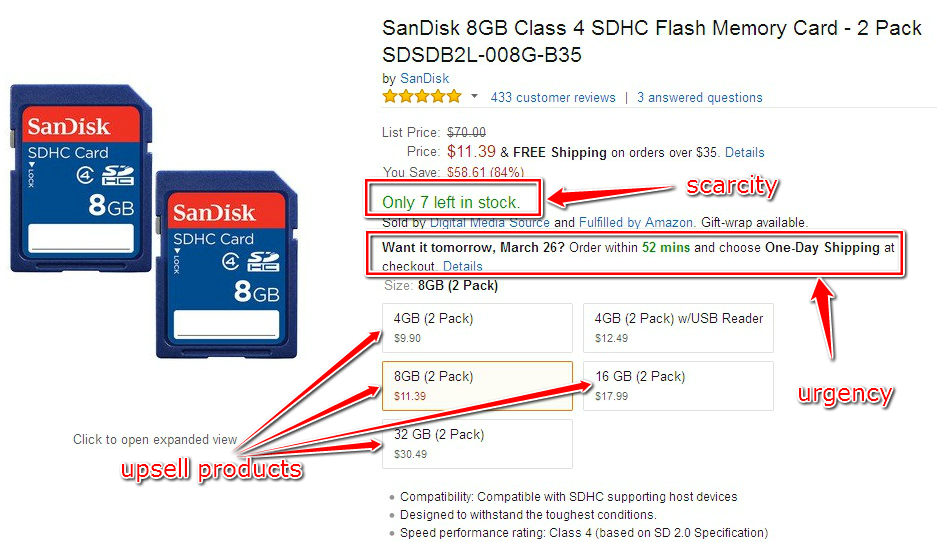
Image source: eCommerce Insiders
A study by Econsultancy concluded that upselling drives over 4% of ecommerce sales.
Upselling is so popular and effective because it targets customers who have already added something to their cart. You’ve already overcome their fear and resistance related to buying. So it’s easier to give them a slight nudge or reminder to help them make a more expensive purchase.
6 upselling techniques to boost your average order value
Now let’s look at a few effective upselling strategies any ecommerce store can start using today.
1. Promote popular products
Your customer has already taken the time and effort to research, review, and choose the best product at the right price from your store. Customers don’t want to do more work searching for additional products. Help them by displaying “most popular products” or “most viewed products.” Social proof is always an effective tool.
Product recommendations are responsible for 10 to 30% of gross e-commerce sales. The good news is that you don’t have to show the products at the end of their shopping journey on the checkout page. You can choose to display additional products to visitors throughout the website.
Here’s an example from Walmart. When shoppers are searching for a specific product, products in the same category are displayed.
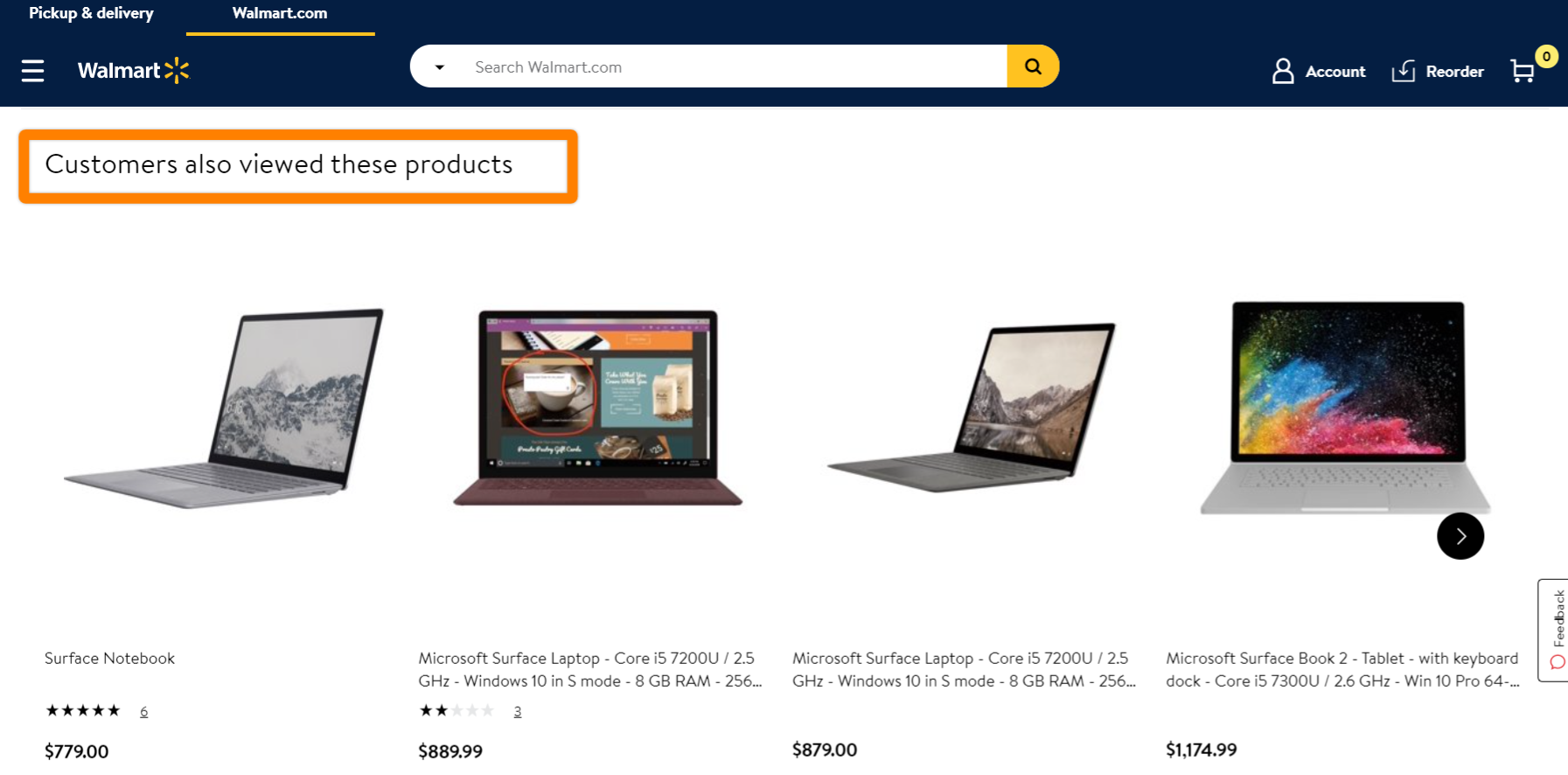
2. Provide free shipping above a predefined amount
Around 90% of ecommerce shoppers say that free shipping is the number one incentive for them to shop online.
Free shipping is a viable upselling technique to increase your AOV.
A common incentive used by e-commerce stores is reminding customers how much they have to spend to qualify for free shipping.
The brand can also display an upgraded or higher-priced product for the customer to be eligible for free shipping.
Here’s an example from Bathorium, a Canadian ecommerce brand for sustainable bath products. To qualify for free shipping, a customer has to spend over $70. Bathorium displays a free shipping offer at the top and bottom of the page.
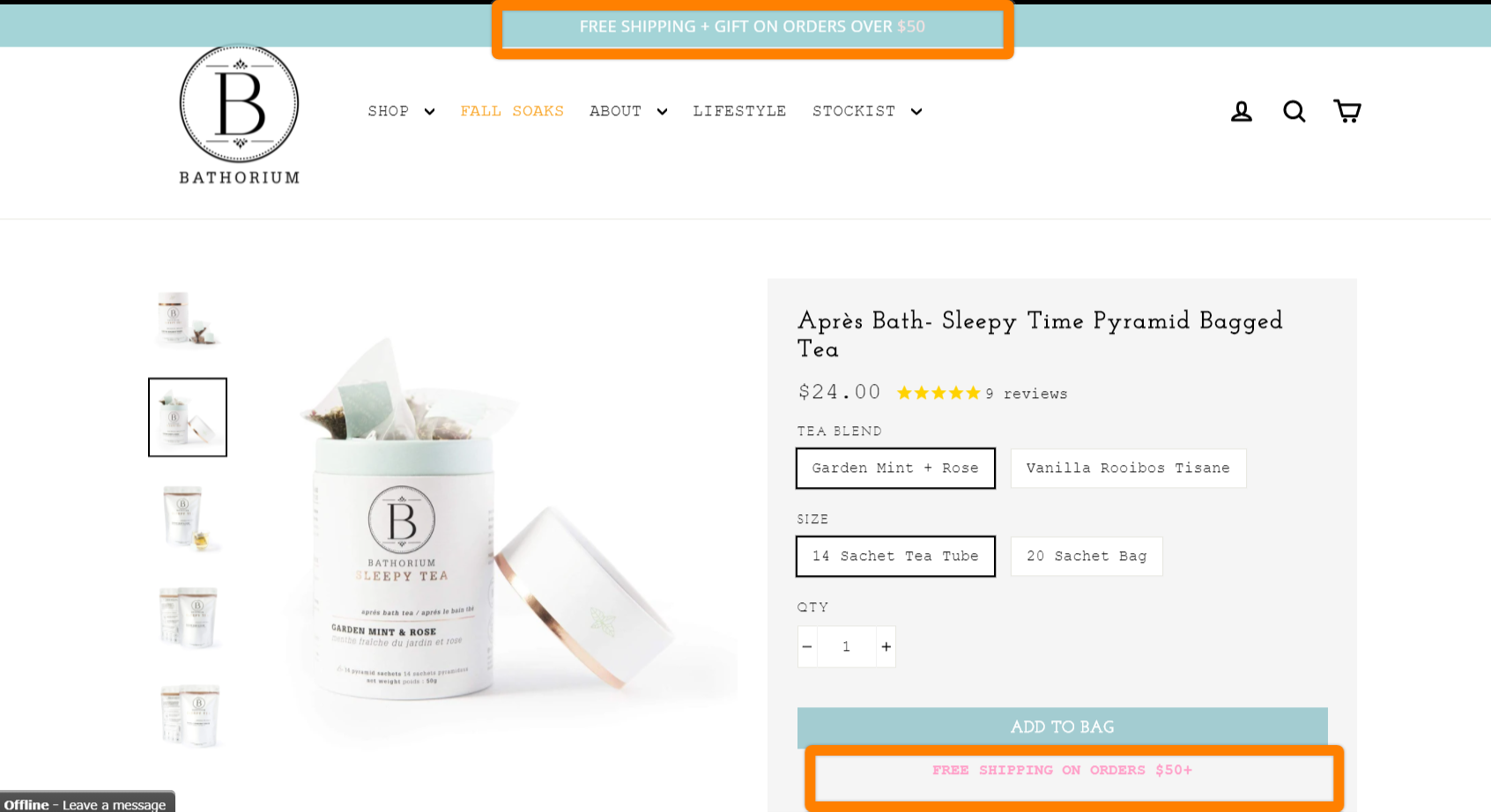
3. Promote personalized offers based on customer history
According to a study by Accenture Interactive, 75% of consumers are more likely to purchase from stores that offer a more personalized experience.
To increase shoppers’ cart value and AOV, focus on personalizing offers and product recommendations.
A common mistake made by e-commerce stores is that they display the same offers and popups to every visitor.
No two visitors are the same, even if the visitors are in the same location, age group, or gender. Hence, displaying the same offers will usually yield lower conversions.
If you display personalized product recommendations based on the shopper’s browsing history, it will increase your chances of upselling.
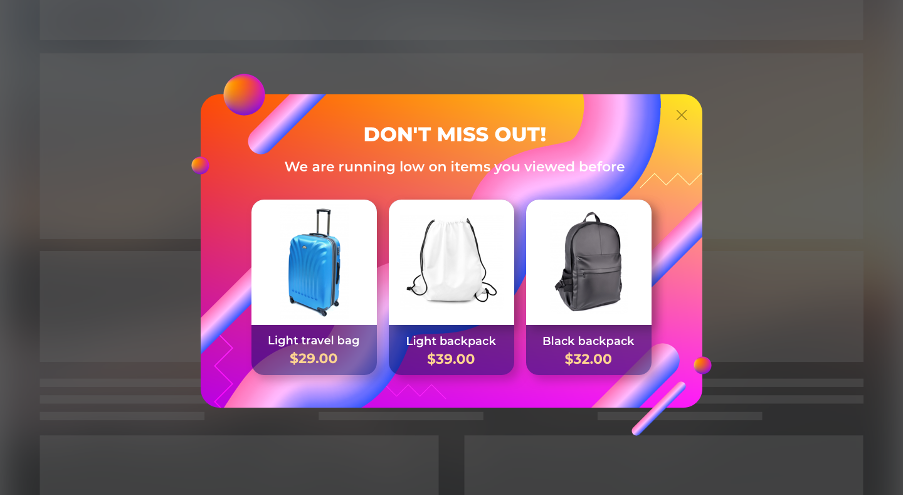
If you’d like to promote personalized product recommendations on popups, try these ready-to-use templates:
4. Provide an upgrade offer
Upgrades are another common upsell technique.
E-commerce stores use upgrade offers just before they confirm payment. It’s the ideal time to offer visitors an upgrade since they’ve already made a decision to buy from you and there’s no little or no resistance.
Upgrade offers are commonly seen in the travel industry.
Here’s an example from Marriott International. Once a customer chooses the details of the stay and the dates, Marriott displays additional upgrade options in detail.
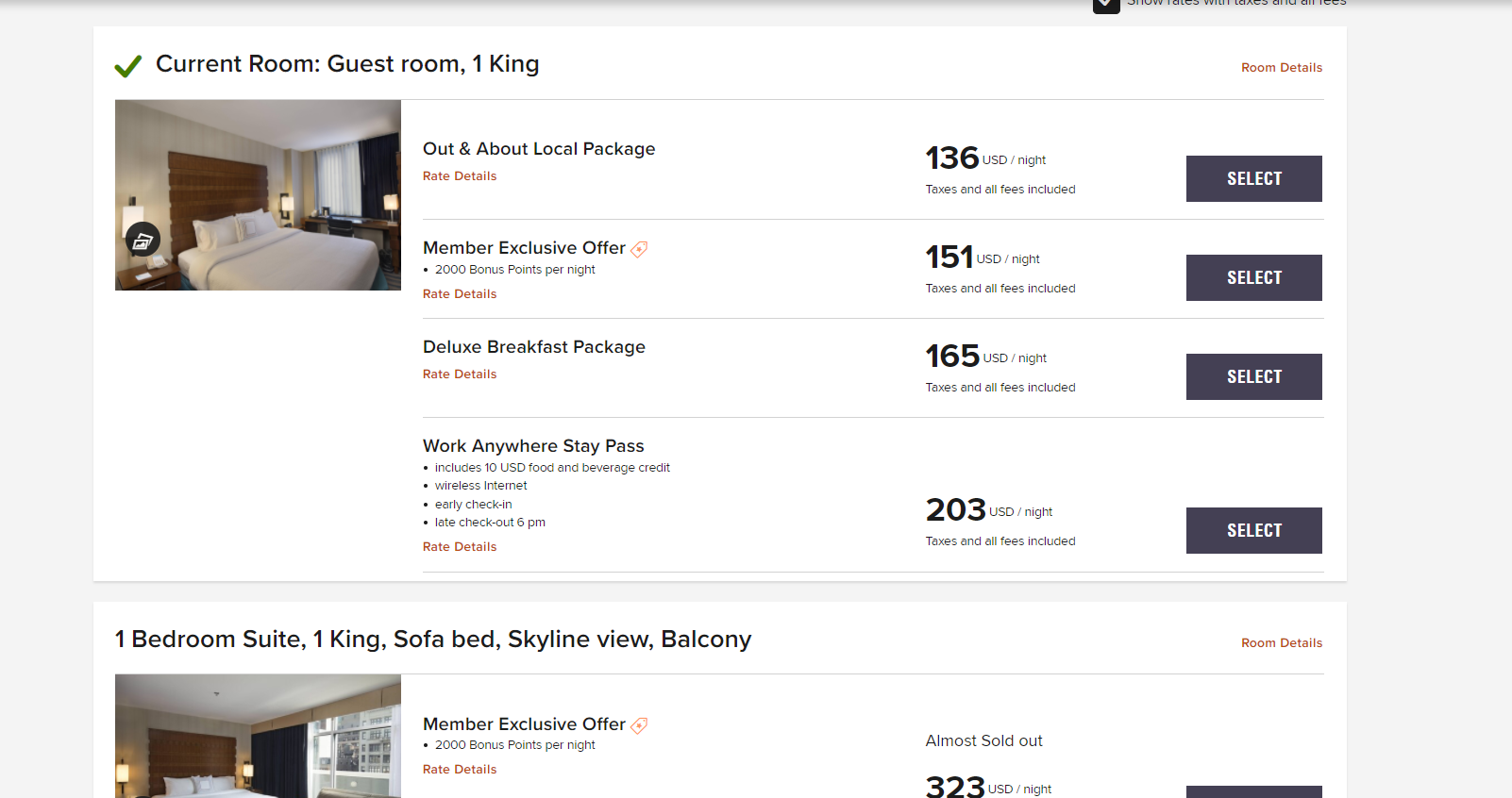
5. Offer package deals
An upgrade is typically an enhanced — or pricier — version of the same product or service. You can apply the same principle to other products, bundling various items together.
Bundled offers and packages work well because they save shoppers time. Otherwise, the custommer spends additional time researching additional products.
Amazon usually displays a complimentary product just below the product description.
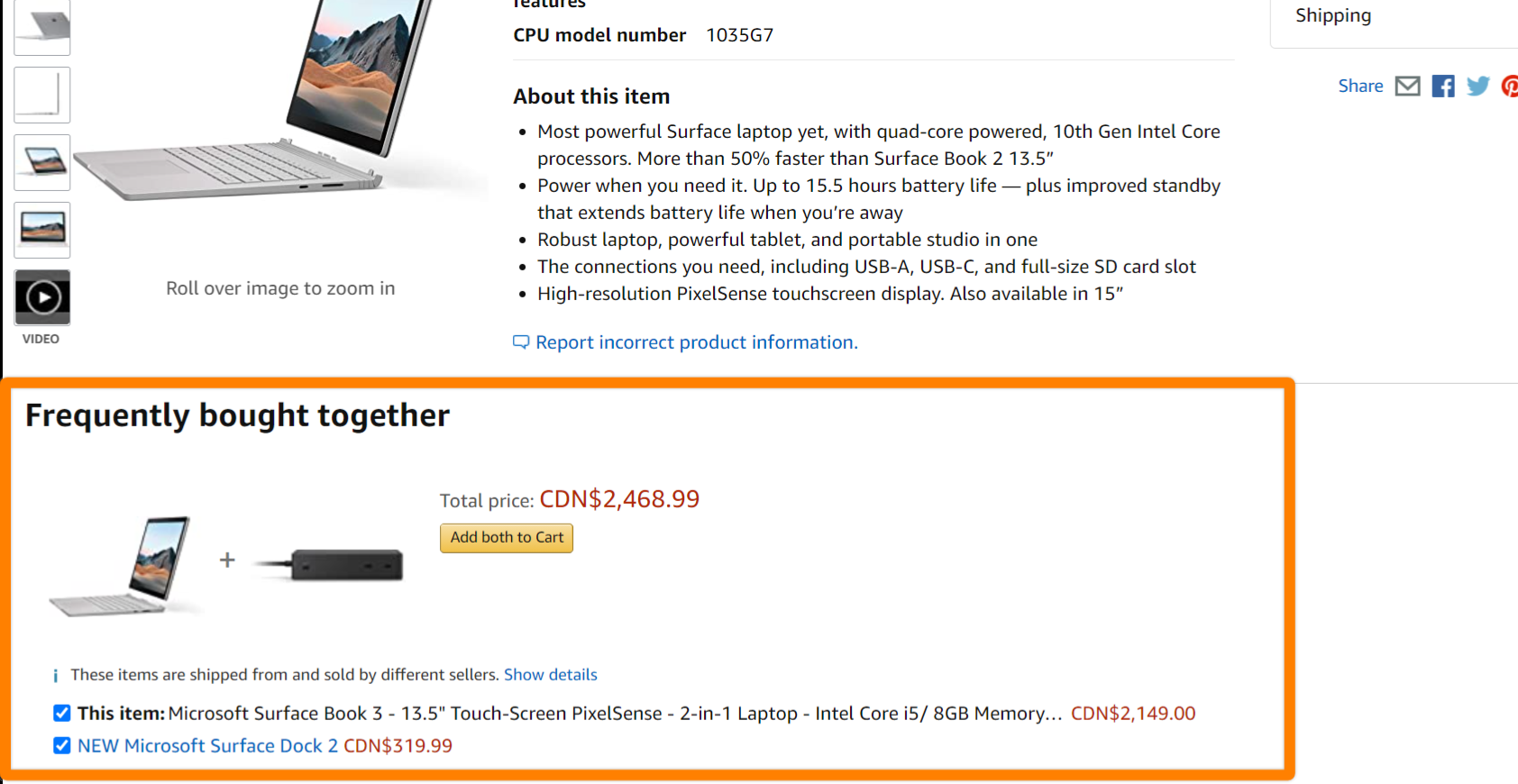
6. Provide an upsell offer post-purchase
According to the Baymard Institute, the average shopping cart abandonment is 69.57%. Most online shoppers simply never complete their purchases.
Another option is post-purchase upselling, where you display your upsell offer immediately after they have completed the purchase. Offers can be displayed on the sales page (post-checkout) or sent via the confirmation email.
You can encourage them to continue shopping at your store by offering discounts for their next purchase.
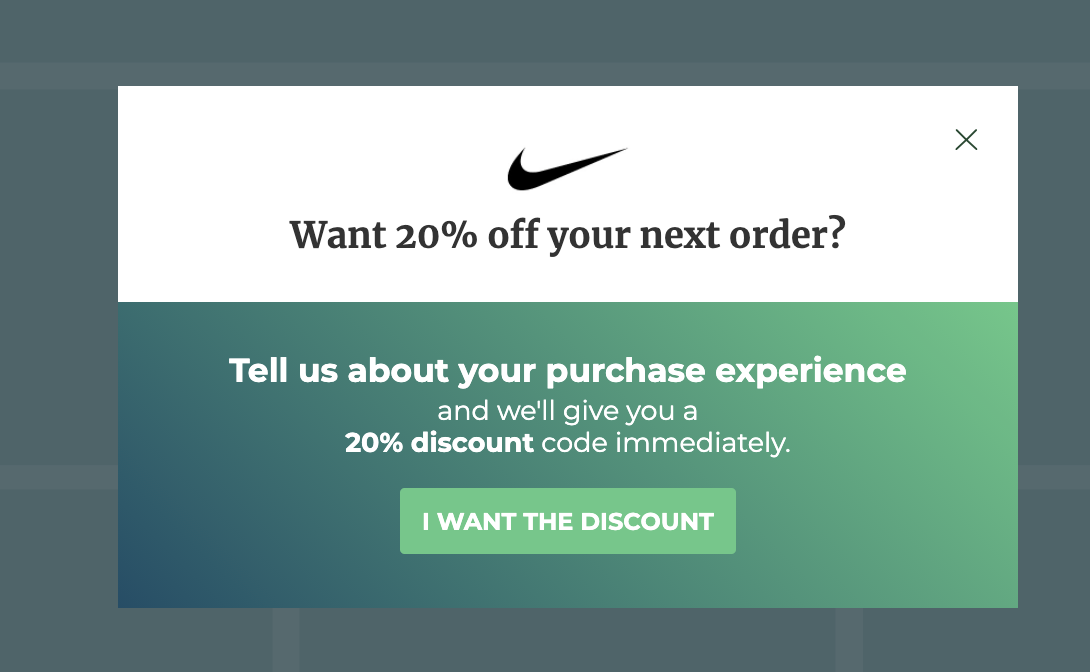
Watch this video to find out the best 5 upsell apps to elevate your revenue:
5 common upselling mistakes to avoid
Though many ecommerce websites employ different types of upselling strategies to boost their conversion and generate more revenue, not all use it effectively.
Let’s look at some examples of upselling gone wrong.
1. Recommending the same products to all visitors
One of the most common mistakes is treating every visitor the same and offering the same upsell offer to everyone.
The best way to avoid this mistake is by allowing the visitor to pick and choose what type of products they would like to see — and then personalizing the offers based on their preferred option.
You can also build personalized offers based on demographics or behavior data from Google Analytics.
For example, display a special offer based on their location (or country) as in this example.
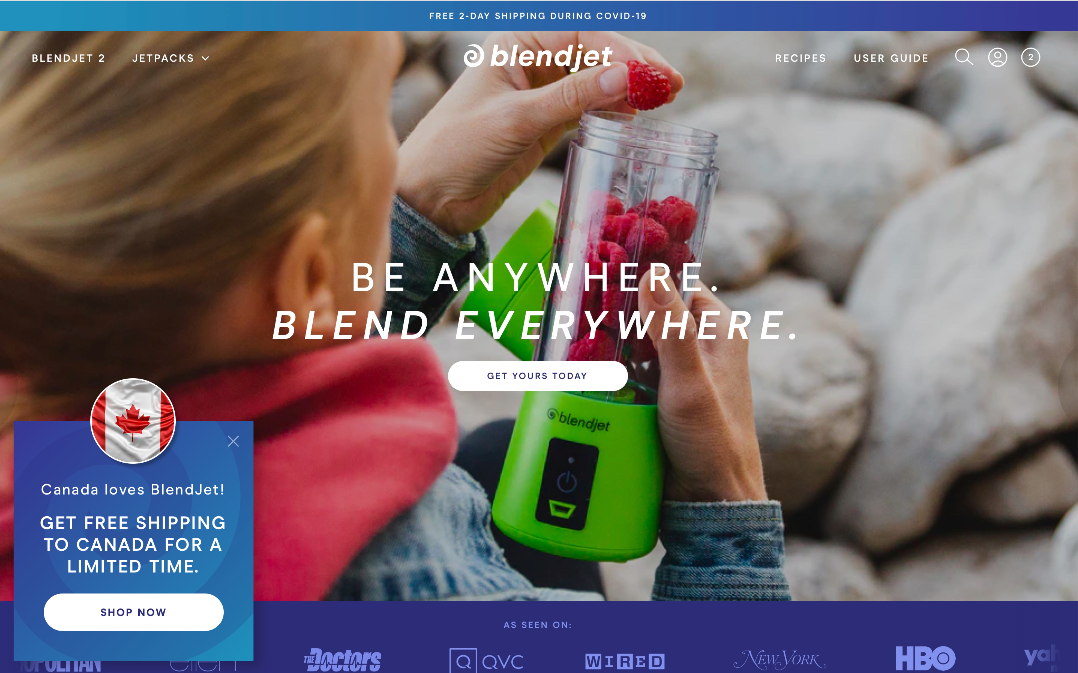
2. Upselling irrelevant products
Another upselling mistake made by online stores is displaying irrelevant products that are either not suitable for the original purchase or not ideal for that shopper.
The best way to ensure you’re not making the same mistake is by properly segmenting your audience and then personalizing the offers based on their needs or search intent.
3. Displaying product recommendations at the wrong time
Displaying Product Recommendations at the wrong time — too early or on the wrong page — can often confuse or annoy visitors. This causes customers to abandon their shopping carts and leave your website.
The best place to show upsell offers is when they are already multiple steps into their buying process they are searching for a specific product.
4. Being too pushy
Sometimes, online stores make the mistake of displaying the same offer over and over again. Even if the customer has chosen to ignore it. If a customer has already declined the upsell then don’t show the same offer again.
If the offer were enticing to them, they would have taken it in the first place. Customers want to feel empowered and in control of their purchasing journey.
5. Not pricing the upsell properly
If your upsell is too expensive, your customers won’t take action on the offer. According to Neil Patel, the rule of thumb for upsell offers is that they should cost less than 50 percent of the original product. Meaning if you are selling a product at $100, then the upsell should not exceed more than $50.
The best example of this can be found on Apple’s website. When purchasing a higher ticket product such as the Mac (usually $1200 and more), Apple displays upgrades and displays that are cheaper ($300 or less) right below the original product.
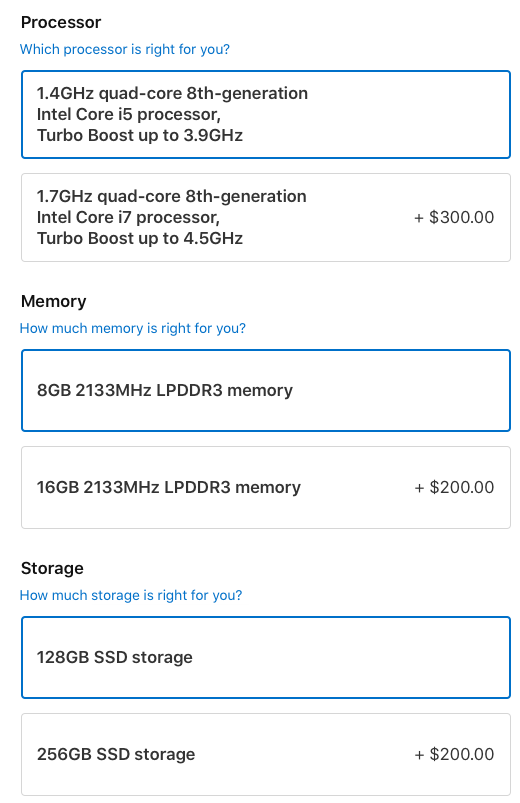
Source: NeilPatel.com
Use Customer Value Optimization to maximize your upsells
The reason why most ecommerce stores make these mistakes (discussed above) is because they rely exclusively on CRO techniques.
CRO isn’t harmful on its own. Ecommerce stores widely use it. But often, stores use these techniques (offers, pop-ups, etc.) to lure or trick customers into making a purchase right away.
Most techniques are employed for generating immediate conversions or upsells. It might work in the short-term, but you end up coming off as pushy or insincere, causing the visitor to lose trust.
An alternative yet effective methodology is Customer Value Optimization (CVO).
CVO is about creating a great customer journey and maximizing the ROI for all marketing activities. It focuses on optimization throughout the customer lifecycle to improve brand and loyalty—and create customers for life.
CVO is about playing the long game. It’s about building relationships with customers. Instead of offering everyone the same upsell offer, using CVO, you’re putting in the effort to understand the visitor, their unique customer journey, and finally offering them relevant messaging.
Recommended reading: The Ultimate Guide to Customer Value Optimization Optimization
The first step to a successful CVO strategy is thoroughly understanding the customer awareness journey.
Another core component of CVO is analyzing and understanding your performance data (Google Analytics). Based on this relevant information, you can then segment your audience.
Once you have segmented them, you can start creating message plans for each segment. Finally, you can create and display relevant offers for each segment.
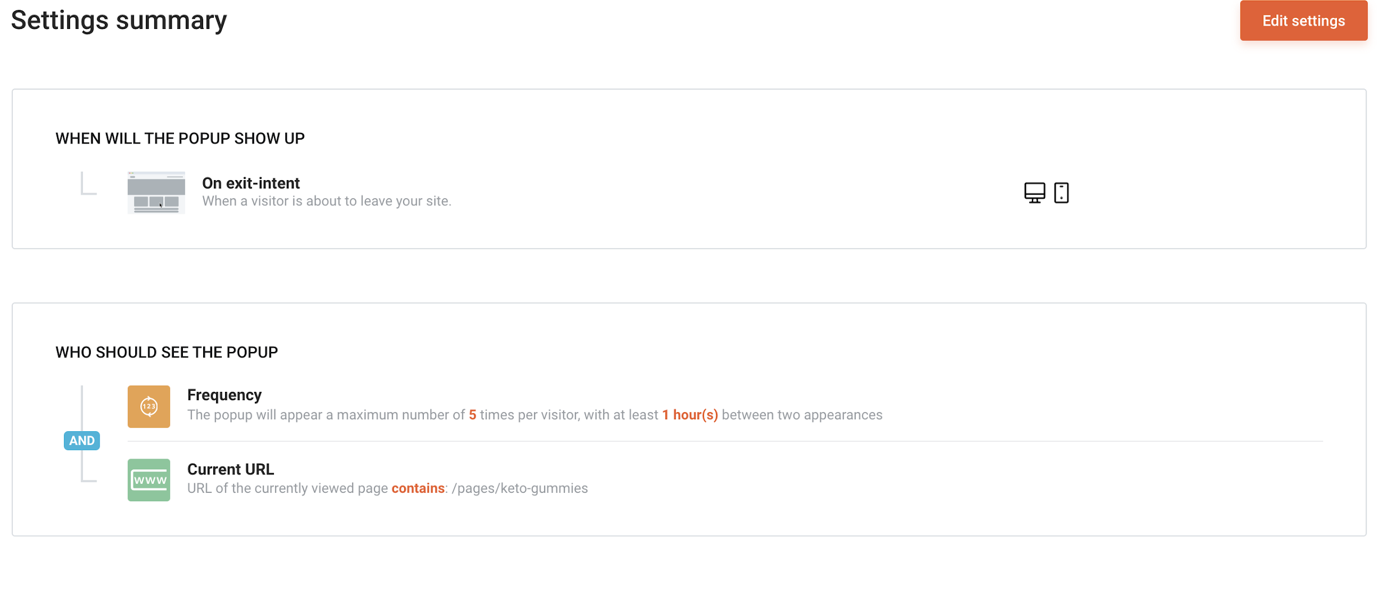
For example, after analyzing your data, you have identified that your revenue from secondary products (or low ticket products) is lower than expected.
Most of your sales are coming from your marquee or popular products.
You can create a specific offer for existing customers and display an upsell offer on their next visit.
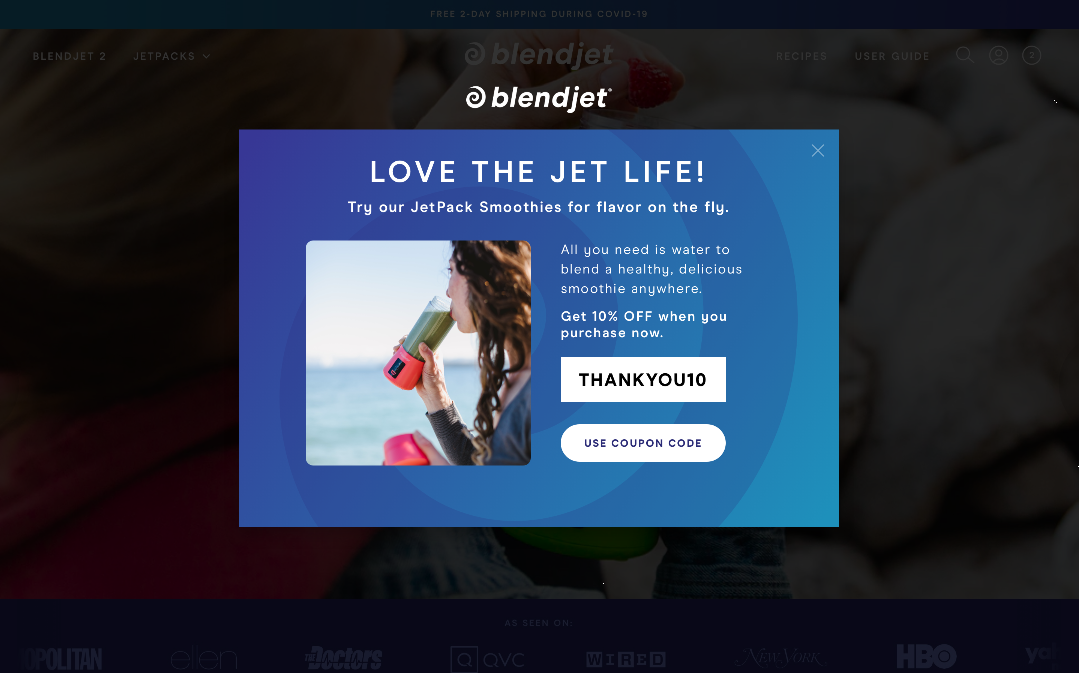
To learn more about Customer Value Optimization, head over to our Inspiration Library. You will find hundreds of pre-made templates, additional themes, and new use cases.
FAQ
What is ecommerce upselling?
Ecommerce upselling refers to an ecommerce strategy wherein an online retailer encourages customers to purchase additional items or upgrade their current selection, usually on the checkout page. This can involve suggesting complementary products, offering discounts on bundled items, or proposing premium versions of the chosen product to increase the overall order value.
How do I upsell on my ecommerce website?
Upselling on your ecommerce website involves strategically presenting relevant and enticing offers to customers at various stages of the customer’s journey. This can be achieved through personalized product recommendations based on customer preferences, implementing persuasive copy and visuals to highlight the benefits of upsell items, and optimizing the checkout process to seamlessly integrate upsell offers.
What are the 4 stages of upselling?
The four stages of upselling typically include:
- Pre-sale: Identifying opportunities to upsell based on customer data and preferences before they initiate a purchase.
- During-sale: Presenting relevant upsell offers during the checkout process when customers are already in a buying mindset.
- Post-sale: Recommending additional products or services after the initial purchase to enhance the customer experience or address related needs.
- Ongoing upselling: Continuously engaging with customers to upsell additional items or upgrades over time, fostering long-term relationships and maximizing lifetime value.
What are good examples of upselling?
Some good examples of a successful upselling strategy include:
- Offering a premium version of a product with enhanced features or functionality.
- Suggesting related products that complement the customer’s initial purchase, such as accessories or consumables.
- Providing discounts or incentives for purchasing bundled items together.
- Presenting loyalty program memberships or subscription options with added benefits or savings opportunities.
Conclusion
Upselling is one of the most commonly used yet effective marketing techniques used by e-commerce stores to increase cart value, average order value and lifetime value.
If you already are using upselling techniques — but not getting the conversions you think you need — then we are confident that OptiMonk can help.
We have worked with over 30,000 websites, and they have used OptiMonk to increase their cart values and AOVs. The best part is that it’s entirely free to start and test the platform. Click here to get started.
